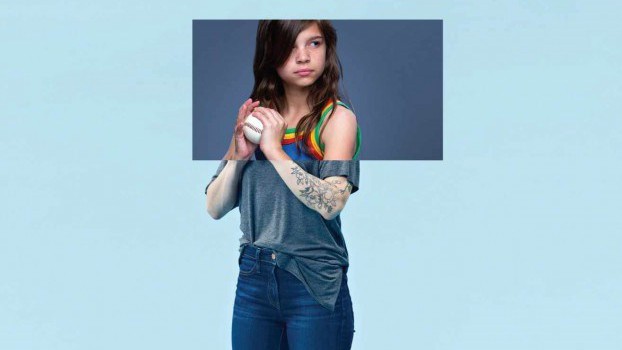Taxi proves once again that it’s a formidable contender. It climbed back up the ladder to Silver from its Finalist position last year, having won Gold in 2008, and each year from 2002 to 2005. This marks the ninth time Taxi has taken a top three AOY spot in that past decade. Impressive to say the least.
Taxi’s winning work – for the likes of McCain, Koodo, Yellow Pages, Mini and Bombardier (which won Gold in strategy’s B!G awards) – is indicative of the intensely creative attitude the agency seems to apply to everything it does.
The agency that prides itself on doubting convention didn’t flinch in the face of a tough economy the last few years. It opened a European arm in Amsterdam in 2009, adding to its previous expansions across Canada and in New York. Centralizing the costs and keeping the backroom in Toronto has helped mitigate the risk, explains Taxi CEO Rob Guenette.
Guenette also notes that Taxi senior partners – himself, CCO Steve Mykolyn, COO Ron Wilson and chairman Paul Lavoie – are all very hands-on. “We all [are] active in the company, deep in the trenches…We never lost touch with our senior clients. We stayed very imbued in the culture of
the company.”
Another key to success lies in staffing and proactive HR. The agency prides itself on a low turnover rate among senior employees. “We always knew who the future leaders were – the future creative leaders, the future business leaders – and we had a plan,” says Guenette of Taxi’s succession strategy – a term not heard often in this era of high turnover and millennial job-hopping.
As part of that succession plan, Jeremy Gayton was appointed president of Taxi (English Canada) in May, having previously held the role of GM for the Toronto offices, while Durk Barnhill was promoted from GM of Taxi New York to president. Jordan Doucette left Taxi 2 to take on the role of CD for Taxi Vancouver, and Mykolyn increased his remit, taking on CCO duties for Taxi Europe.
Taxi is also preparing for the future by acting on the digital shift in advertising. The shop it acquired in Amsterdam was a digital one, and, Guenette says, “We’re increasing our digital IQ almost month on month, and we’re changing how we’re training our people, where they’re going for their stimulation, their continuing education, we’re changing how we’re recruiting.”
Guenette predicts that in the coming years agencies will be expected to be more accountable in delivering ROI, and more flexible, adapting to media that’s changing in real time. “I think clients are going to hold you to a global standard because competitive benchmarking around the world is that much easier now,” he says.
“Being big thinkers and being able to execute ideas and solve business problems is nothing new,” adds Mykolyn. “Agencies that do that and do it consistently will be successful now and in the future.”
And that seems to be Taxi’s secret to staying on top of the ad game – treat it like a business, and rather than perfecting clever theories and MOs for dealing with the new adscape, just do it all smarter.
Mini’s milestone
Selling cars went from a plum assignment to incredibly tough in the last few years. As the market contracted, so did budgets, and key players in the auto industry debuted some of the most lenient sales programs ever. Hardly an easy environment in which to market a car that has plenty of substance but has always sold itself more on style.
Coincidentally, the worst year in automotive sales history just happened to be the 50th anniversary of the Mini. So, the challenge
was to make sure it would be a year worth celebrating.
Instead of trying to give cars away, the tactic was to make people want them. People were starting to get a little down with the constant reminder of just how bad things were, so Mini did what it’s always done: celebrate its exuberance, and make sure people knew that it was no ordinary 50-year-old.
The creative approach relied heavily on out-of-home, the medium used to build the brand, along with television, the first for Mini in several years. TV demonstrated Mini’s handling (and showed the world what you can do with man boobs). Out-of-home continued to demonstrate the cheeky attitude and the sheer fun of driving a Mini. 
Arguably the most exuberant expression of “Mini-ness” came from a guerrilla idea that took very little money and time but, nevertheless, created quite an impact. A Mini convertible was rigged with a pair of mannequin arms to make it appear that the driver’s arms were up in the air – just like on a rollercoaster. It generated so much attention that it was duplicated in other markets, including Japan, Taiwan, Dubai and Russia.
Beyond the downturn of the entire automotive sector, Mini also faces the challenges of being in the compact and sub-compact segment – the hardest hit part of the industry. But in typical Mini fashion, sales in the first quarter of 2010 ignored the recession and exceeded targets. Mini may have hit 50, but it shows no signs of slowing down.
It’s all good for McCain
McCain is the largest producer of french fries in the world, and a favourite of time-pressed moms. But lately, moms have started to ask questions about the impact of preservatives and chemicals in packaged foods.
Because of this, McCain made one of the biggest decisions in its history: its products were going to be made from the same ingredients that you would use if you were making them at home.
The challenge was to spread the news about this fundamental rethinking of ingredients and create the biggest campaign the company had ever invested in.
McCain asked some tough questions about its products. When at first scientists said it was impossible to eliminate synthetic preservatives, they kept pushing until the answer came back that there was a way. It had never been done before, but it was possible.
McCain’s commitment to finding the right answers for moms’ questions became the jumping-off point for creative. The effort was called “The Questions Campaign” because it went beyond “What’s for dinner?” to address “What’s in dinner?” across its product portfolio. 
“It’s All Good” launched in February, with TV, print and online. Each execution asked a simple question about what goes into the food we eat, like “Shouldn’t food be the only ingredient in food?” and “Can a nutritionist and Pizza Pockets get along?” Previously, each of McCain’s lines of business acted individually, so the umbrella campaign helped build positive equity for the master brand.
The campaign also included PR, as well as internal communications that became the centrepiece of a cross-country tour of McCain production facilities.
Every aspect of the brand was affected, and this far-reaching, long-term campaign is off to a powerful start. Sales across the key portfolios are up, and aided campaign awareness is 88%.
Koodo wins with El Tabador
When Koodo launched two years ago, it debuted with a bold look and the proposition of affordable mobility on customers’ own terms.
Two years’ worth of campaigns with eye-catching colours and pop culture references had firmly established the Koodo brand, but the CRTC rulings
opening up the mobility space meant that Koodo would be facing a new wave of value players.
Its not-so-secret weapon was the Tab, Koodo’s unique alternative to contracts and pricing. While it had been featured in communications since the launch, it had never been the singular focus of a campaign. The challenge was to take Koodo’s most differentiated brand asset and make it a core part of communication.
Koodo is a brand with change in its DNA. While the attitude and style remain constant, the creative idea evolves to zero in on the strategic needs of each campaign. So to turn the Tab, a billing option, into something of interest, Taxi again looked to pop culture and came back with the luchador (a style of Mexican wrestler made popular by the movie Nacho Libre), creating El Tabador, a character who would lead the fight for phone freedom.
El Tabador became the focal point of a multimedia campaign that began in winter, with the neon-spandex-clad character appearing in television, out-of-home and print. 
Two online experiences extended El Tab’s reach. The first was a game, “Get in the Ring,” which featured Bloatimus Contractimus, an evil opponent who personified the competition. Users were able to control the action and create their own personalized experiences.
A three-minute YouTube mockumentary shared the backstory of El Tabador. It featured some of the characters in his life – his former girlfriend, his manager, and banter and friendly rivalry from real-life wrestler Bret “The Hitman” Hart.
Koodo does not release sales numbers, but El Tab caught on. He’s now in the top 20 most-viewed sponsor channels ever on YouTube in Canada and the number 12 most subscribed-to channel of all time. In the first three months of the campaign, more than 275,000 views were recorded on Koodo’s YouTube channel. El Tabador’s mission is well underway.
Yellow Pages goes mobile
One of the areas technology has affected most is how we find things. Long gone are the days when you hauled the Yellow Pages out of a cupboard and worked your way through the alphabet.
Although Yellow Pages had already migrated online, the strong connection with the big phone book meant that people didn’t associate the brand with the digital space. This became even more pressing with the launch of its mobile app.
Online search is a crowded space. To launch the Yellow Pages mobile app, Taxi had to zero in on something that was relevant to search, and equally relevant to Yellow Pages’ existing equity.
The point of convergence was the local expertise central to the Yellow Pages brand equity. Want a jeans store in Denmark? Google it. Want the best mochachino you’ve ever had on the other side of town? Find it with Yellow Pages, which has the heritage of being a trusted local resource.
First, the brand identity was updated to signal change and ensure the logo felt at home with those of its competitors.
The creative told the stories of three characters who use the app for their individual – and local – needs. The trio included Randy, the muscleman, who requires a little help to show off his physique; Luke, the photo crasher, who is always in search of a new gathering to crash; and a hopeless romantic who, after a stranger’s glance, plans the rest of her life. All rely on the local expertise of the Yellow Pages.
Microsites were created where users could insert themselves in the stories of these strangely compelling characters. Yellow Pages was the first brand in Canada to use a new technology which let Luke literally “crash” the site of the user’s choosing.
App downloads nearly tripled from pre-launch levels of 10,000 a week to close to 30,000. Television strongly differentiated Yellow Pages from other brands and increased interest by 26%. Traffic to the microsites was 227% above plan, non-users increased awareness of the app by 21% and belief that Yellow Pages is moving into digital increased 271%.
Yellow Pages is now well on its way to finding a strong presence in the digital space.
Bombardier carries the torch
Bombardier is one of those rare Canadian companies that is actually more famous on the world stage and held in higher esteem abroad than it is at home. Bombardier’s planes and trains are clearly not consumer products, but the support of everyday Canadians is important because public opinion often affects government policies that, in turn, affect business. Bombardier wanted to communicate its values and vision here at home.
Seeing an opportunity to remedy that home turf info gap at the 2010 Olympic Winter Games in Vancouver, the idea was to get the company to play a pivotal role in one of the most symbolic aspects of the Games. Consistent with its strategy to place messaging where Canadian accomplishment and pride would be on display, Bombardier’s decision to become a sponsor was a great opportunity, but not unique.
Taxi and MAOR Media Experts developed an idea that would put Bombardier at the very heart of the Games. Instead of purchasing the typical broadcast package, Bombardier would offer to design and manufacture the Olympic torch. 
The first component of the plan was, of course, the torch itself. With a sleek design, it was a symbolic example of Bombardier’s capability and expertise.
A 30-second television spot announced Bombardier as the maker of the torch, debuting during the opening ceremony of the Games, just before the arrival of the torch. The commercial continued to run throughout the Games, fanning Canadian pride and showcasing Bombardier’s contribution.
The goal was not to sell more product. Instead, it was the more intangible measure of corporate reputation that they wanted to drive. Following the Games, the annual CROP survey on the image and reputation of Canadian companies showed a major upswing in public opinion for Bombardier. The number of Canadians with a very favourable opinion grew by 28% from the previous year. Evidently, the torch ignited Canadian pride.
Jump to:
Bronze: Welcome to the club, Sid Lee]
Honourable mention: BBDO’s winning insights
Finalist: CP+B’s winning evolution






















